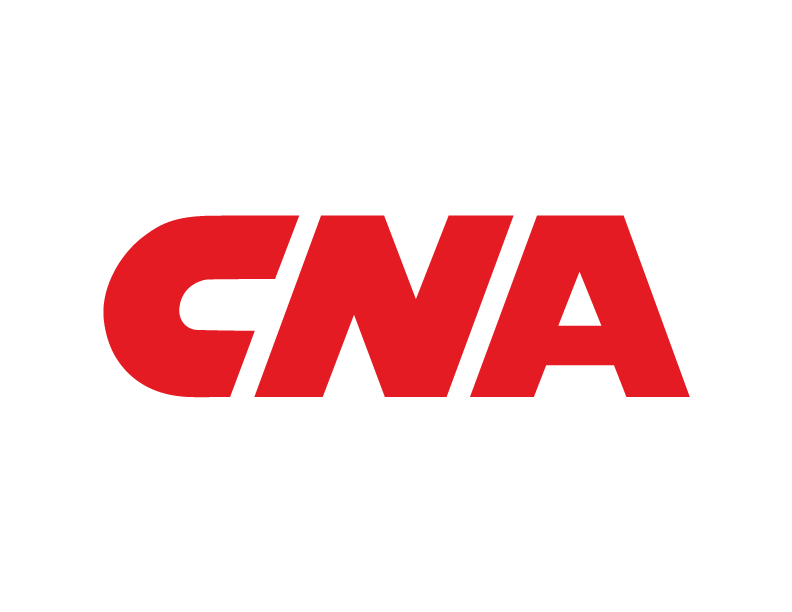Understanding the Unique Distribution Challenges Of COVID-19 Vaccines
Like any other pharmaceutical, a COVID-19 vaccine must be proven safe and effective in Phase III clinical trials which involves a large number of volunteers. The data on the vaccine is then presented to a country’s pharmaceutical regulatory authority for an independent assessment to determine if the vaccine meets national standards for quality, safety and efficacy for use. Currently, three COVID-19 vaccines – Moderna, Pfizer-BioNTech (Pfizer) and AstraZeneca – have been approved for use in a number of countries.
With the rollout of these vaccines, the public has expressed hope that the pandemic will soon be a thing of the past and life will return to ‘normal.’ Scientists and the World Health Organization (WHO) have a more tempered view. According to WHO, “the impact of COVID-19 vaccines on the pandemic will depend on several factors including the effectiveness of the vaccines; how quickly they are approved, manufactured and delivered; and how many people get vaccinated.”1.
Getting the vaccine into the arms of people will not be without its challenges and risks, not just on a national but a global scale. The logistics of distributing the vaccines across a country will be influenced by the specific cold chain requirements of each vaccine, security arrangements, and selection of the most efficient transportation to distribute the vaccines from a port of entry to its final destination, including rural and remote communities. At its destination, additional challenges will include ensuring security and the correct type of storage unit. Administration of the vaccine involves providing essential training to handle the specific vaccine product, management of side effects and record management.
A Profile of the Top Three Vaccines Being Rolled Out Globally
Moderna 2,5
Pfizer-BioNTech 3,6
The 70.4% efficacy rate of the AstraZeneca vaccine is the most significant difference amongst the vaccines.
Safety information updates are ongoing.7
Shipping, Storage and Handling8,9,10
Considerations for selecting one of the currently approved vaccines will be determined largely by the temperature required to ship and store a vaccine, and any specific training required to administer the vaccine.
This article from Reuters titled “From labs to jabs” outlines cold chain and handling requirements for each vaccine.
In Canada, the Moderna vaccine is being sent to Canada’s three northern territories (Yukon, Northwest Territories and Nunavut) to avoid the need for ultra-low temperature freezers.
Vaccine Management
The integrity of a vaccine relies on stable, consistent temperatures. Strategies to maintain cold chain conditions during shipping and storage include:
- Using dry ice or refrigerated storage during shipping as required by the specific COVID-19 vaccine product11
- Using Bluetooth to monitor temperature while the vaccines are being transported12
- Having a sufficient number of the correct storage units (refrigerator, freezer, ultra-low temperature freezer) for the specified vaccine product(s) on-site that are large enough to prevent crowding the inventory
- Selecting and using the correct storage unit for the specified COVID-19 vaccine product(s)
- Checking and recording the minimum and maximum temperature of vaccine freezers and refrigerators daily
- Using temperature alarms and having protocols for responding to out-of-range temperatures
- Having emergency power availability to vaccine storage units in event of a power outage
- Having emergency handling procedures for handling vaccine in the event of storage unit malfunction/failure that may compromise the unit’s storage conditions13
Each vaccine product must be handled and administered appropriately to prevent vaccine compromise and unnecessary vaccine waste. Strategies include:
- Storing the vaccine with the earliest expiration date at the front of the storage unit
- Removing expired vaccine stock
- Training staff in the appropriate steps to prepare and administer the COVID-19 vaccine product(s) in inventory
- Following manufacturers’ instructions for preparing the specific vaccine product(s)
- Not using partial doses from two or more vials to obtain a full dose
- Maintaining immunization records on every vaccine product recipient so the recipient can be reminded when to come in for the second dose of the same vaccine product
Strategies to Mitigate Security Risks
Both the Pfizer and Moderna vaccines are in short supply and high demand, making them targets for theft, hijacking or diversion of the drugs, and sabotage. Mitigation strategies include:
- Using GPS sensors to monitor location while the vaccines are being transported14
- Having security escort for trucks15
- Using undisclosed transportation routes and storage locations
- Using direct shipment to reduce stops during route
- Using dummy (empty) trucks to throw off thieves16
- Video-monitoring the vaccine storage area
- Locking the vaccine storage area
- Restricting access to vaccine storage units
- Limiting the number of authorized personnel who have access to vaccine storage units
The deliberate sabotage of a facility’s vaccine supply by a healthcare provider is not an anticipated risk. However, a Wisconsin hospital pharmacist was arrested on December 31, 2020 “on charges that he intentionally sabotaged more than 500 doses of the COVID-19 vaccine at a Wisconsin hospital.”17
Vaccine Distribution and CNA Insurance Coverage18
A CNA insured with coverage for their operations as a logistics or transportation specialist, or cargo insurance for temperature-controlled cargo or pharmaceuticals may be called upon to assist with COVID-19 vaccine product distribution. Brokers should not assume that their clients’ current insurance coverage will automatically respond to the provision of the above services for the distribution of COVID-19 vaccine products (e.g., Pfizer-BioNTech) requiring ultra-low temperature freezers.
CNA considers vaccine shipments requiring different handling or temperature control than an insured’s usual practice a material change in risk. Brokers should contact their underwriter with details of their clients’ involvement with COVID-19 vaccine to discuss potential options for coverage.
1 WHO. (2021). Coronavirus disease (COVID-19): Vaccines. Retrieved at:
https://www.who.int/news-room/q-a-detail/coronavirus-disease-(covid-19)-vaccines?adgroupsurvey=%7ba
dgroupsurvey%7d&gclid=EAIaIQobChMI-Yas7saM7gIVDuPACh2iTQUwEAMYAiAAEgJvCfD_BwE
2 Government of Canada. (2020). Moderna COVID-19 vaccine: What you should know. Retrieved at: https://www.canada.ca/en/health-canada/services/drugs-health-products/covid19-industry/drugs-vaccines-treatments/vaccines/moderna.html.
3 Government of Canada. (2020). BioNTech COVID-19 vaccine: What you should know. Retrieved at: https://www.canada.ca/en/health-canada/services/drugs-health-products/covid19-industry/drugs-vaccines-treatments/vaccines/pfizer-biontech.html.
4 AstraZeneca. (2020). AstraZeneca’s COVID-19 vaccine authorised for emergency supply in the UK. Retrieved at: https://www.astrazeneca.com/media-centre/press-releases/2020/astrazenecas-covid-19-vaccine-authorised-in-uk.html.
5 CDC. (2020). Local Reactions, Systemic Reactions, Adverse Events, and Serious Adverse Events: Moderna COVID-19 Vaccine https://archive.cdc.gov/#/details?url=https://www.cdc.gov/vaccines/covid-19/info-by-product/moderna/reactogenicity.html.
6 CDC. (2020). Local Reactions, Systemic Reactions, Adverse Events, and Serious Adverse Events: Pfizer-BioNTech COVID-19 Vaccine.
7 Government of Canada. (2021). Recalls and safety alerts database. Retrieved at: https://www.healthycanadians.gc.ca/recall-alert-rappel-avis/index-eng.php?cat=3.
8 Ovaska, Michael & Prasanta Kumar Dutta. (2020). From labs to jabs. Retrieved at: https://graphics.reuters.com/HEALTH-CORONAVIRUS/VACCINE/nmovabblmpa/.
9 FDA. (2020). Fact sheet for healthcare providers administering vaccine (vaccination providers) Emergency Use Authorization (EUA) of the Moderna covid-19 vaccine to prevent coronavirus disease 2019 (COVID-19). Retrieved at https://www.fda.gov/media/144637/download.
10 FDA. (2020). Fact sheet for healthcare providers administering vaccine (vaccination providers) Emergency Use Authorization (EUA) of The Pfizer-BioNTech COVID-19 vaccine to prevent coronavirus disease 2019 (COVID-19).
11 NBC Boston. (2020). Intense efforts to Secure COVID Vaccine, Keep it off the Black Market. Retrieved at:
12 Ibid.
13 CDC. (2020). Vaccine Storage and Handling Toolkit Updated with COVID-19 Vaccine Storage and Handling information Addendum added November 20, 2020. Retrieved at: https://www.cdc.gov/vaccines/hcp/admin/storage/toolkit/storage-handling-toolkit.pdf.
14 Op. cit. NBC Boston. (2020).
15 Ibid.
16 Ibid.
17 Dewan, Shaila & Kay Nolan. (2021). Pharmacist Accused of Tampering With Vaccine Was Conspiracy Theorist, Police Say. Retrieved at: https://www.nytimes.com/2021/01/04/us/pharmacist-accused-of-tampering-with-vaccine-was-conspiracy-theorist-police-say.html?utm_source=Sailthru&utm_medium=email&utm_campaign=Issue:%202021-01-05%20Healthcare%20Dive%20%5Bissue:31698%5D&utm_term=Healthcare%20Dive.
18 Lewis, Matthew. (December 2020). Vaccine Shipments and Your Clients’ Insurance Policy. Retrieved at: https://info.cna.com/v/WQ0mTcRfa020EX300E1Ci00
In Canada, products and/or services described are provided by Continental Casualty Company, a CNA property/casualty insurance company. The information is intended to present a general overview for illustrative purposes only. Read CNA’s General Disclaimer.

